
Product Model:
EB23(32)X-20D(I)Data Rate:
10GWavelength:
1270/1310nmDistance:
20KMConnector:
LCFiber Type:
SMDDM:
DDMProduct Origin:
Made in ChinaShipping Port:
ShenZhen
Product Description:10G BiDi SFP+ 1270nm/1330nm 20KM LC Optical Transceiver
Product Parameters
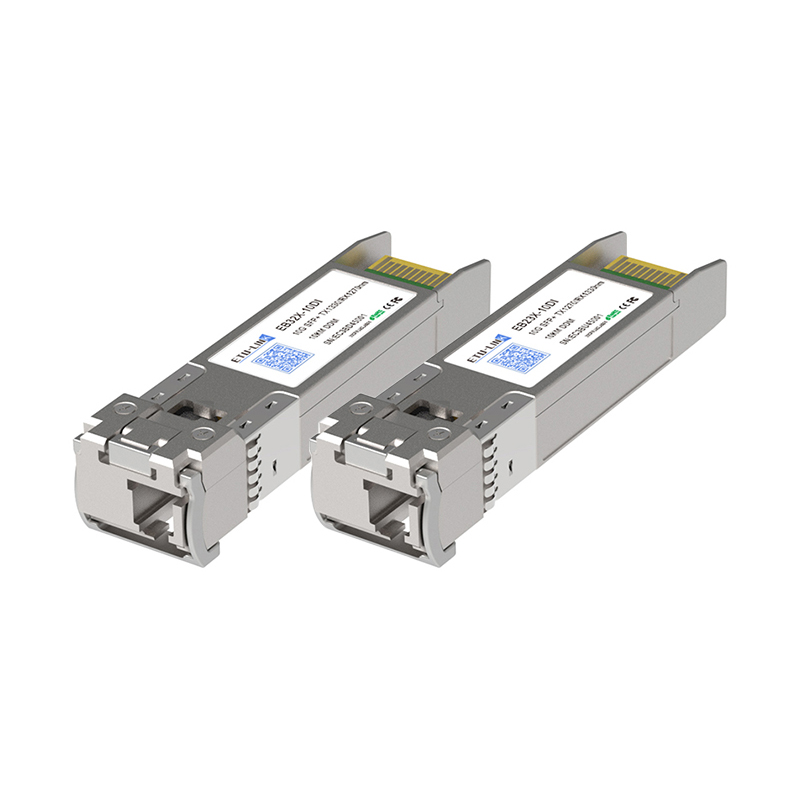 |
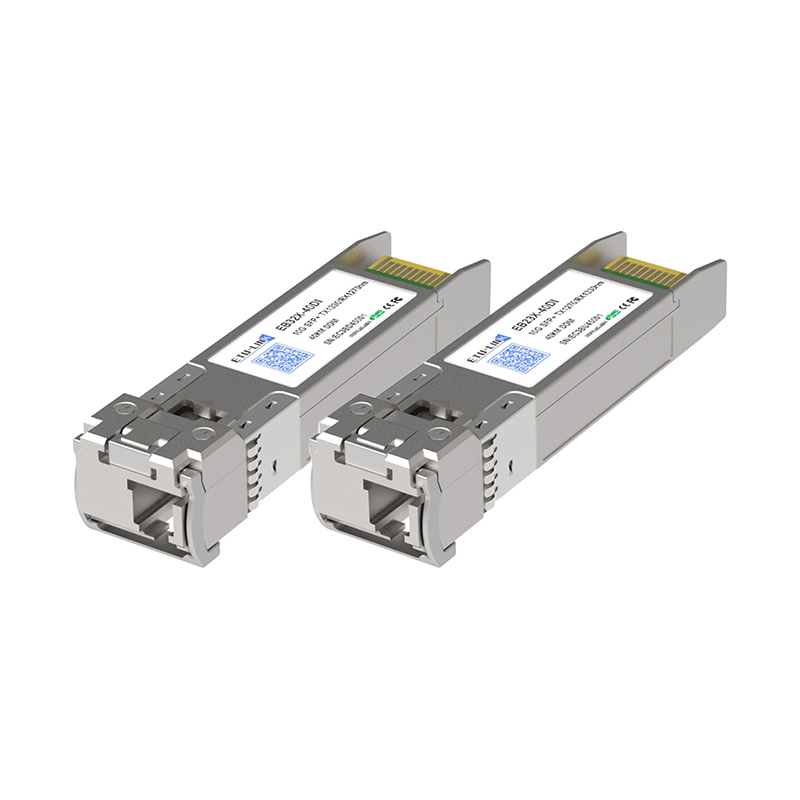 |
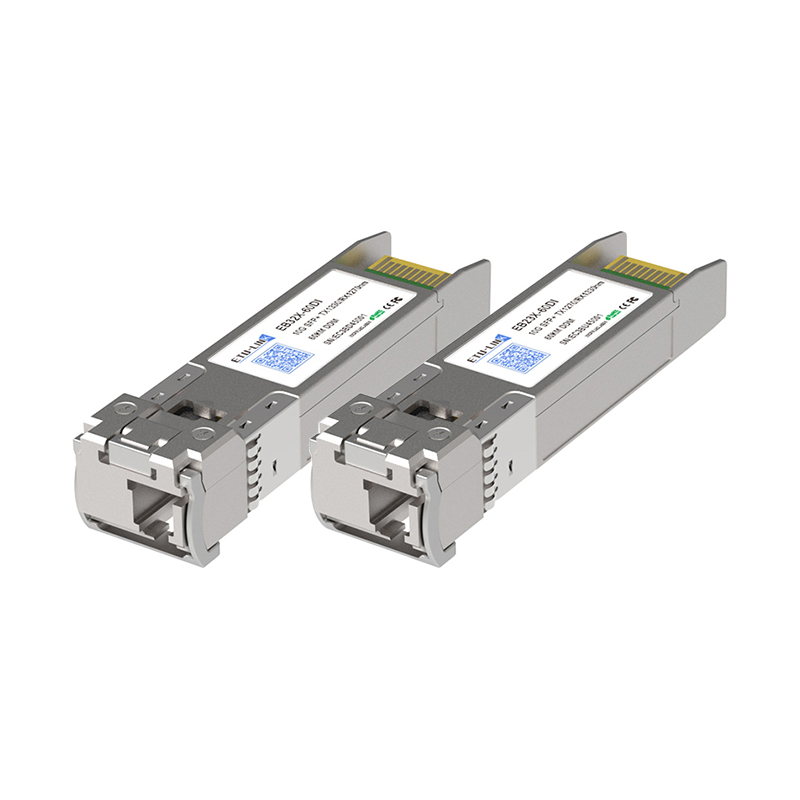 |
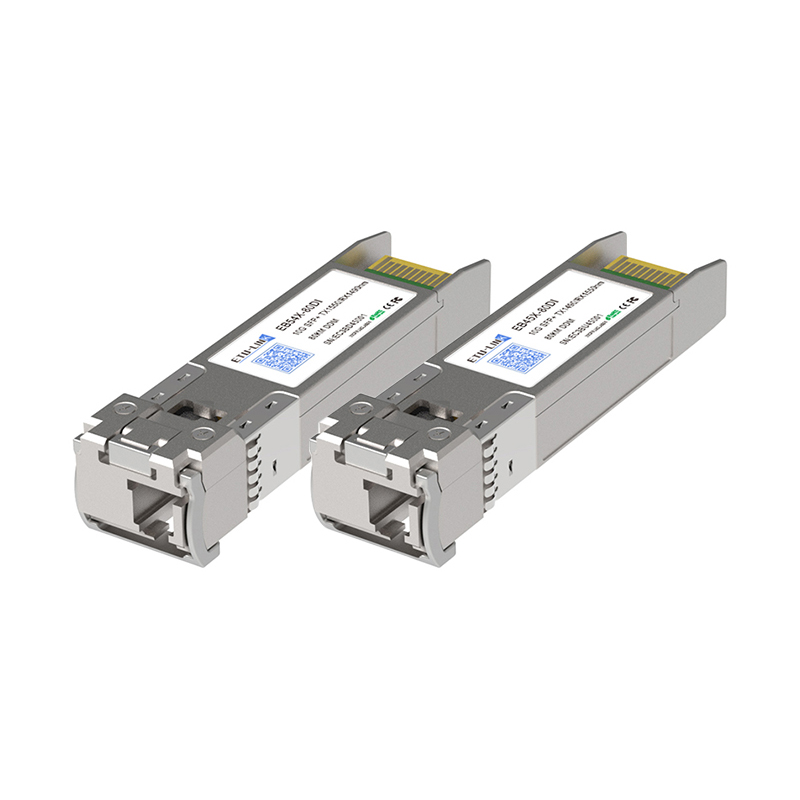 |
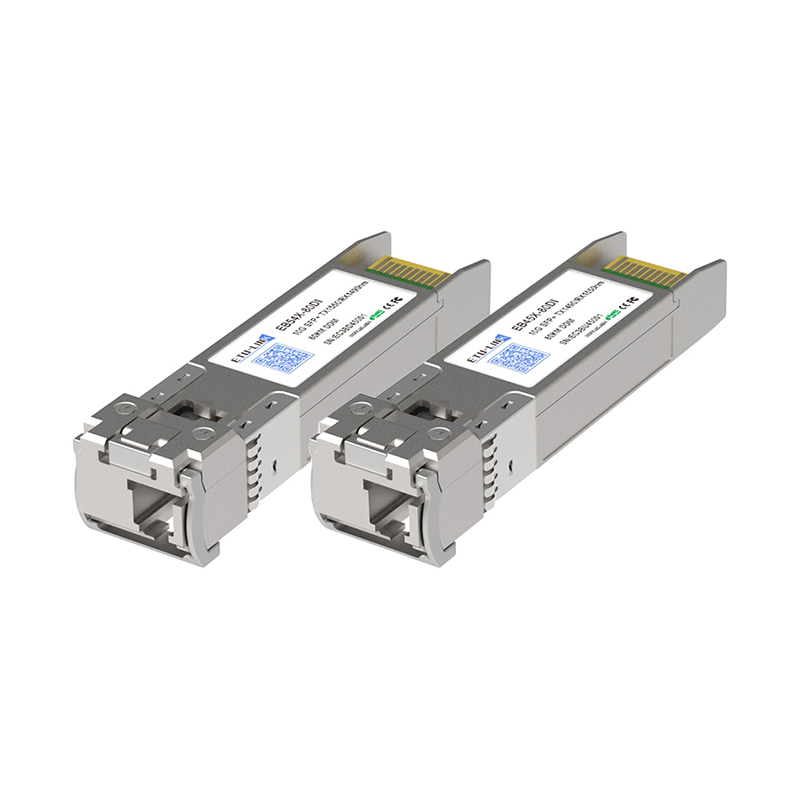 |
|
SFP+ BIDI 40KM |
SFP+ BIDI 60KM |
SFP+ BIDI 80KM |
SFP+ BIDI 100KM |
|
|
10G |
10G |
10G |
10G |
10G |
|
1270nm/1330nm |
1270nm/1330nm | 1270nm/1330nm | 1490nm/1550nm |
1490nm/1550nm |
|
10KM |
40KM | 60KM | 80KM | 100KM |
| LC |
LC |
LC |
LC |
LC |
| SMF |
SMF |
SMF |
SMF |
SMF |
|
DDM |
DDM |
DDM |
DDM |
DDM |
|
COM: 0°C ~70°C
IND: -40°C ~85°C
|
COM: 0°C ~70°C
IND: -40°C ~85°C
|
COM: 0°C ~70°C
IND: -40°C ~85°C
|
COM: 0°C ~70°C
IND: -40°C ~85°C
|
COM: 0°C ~70°C
IND: -40°C ~85°C
|
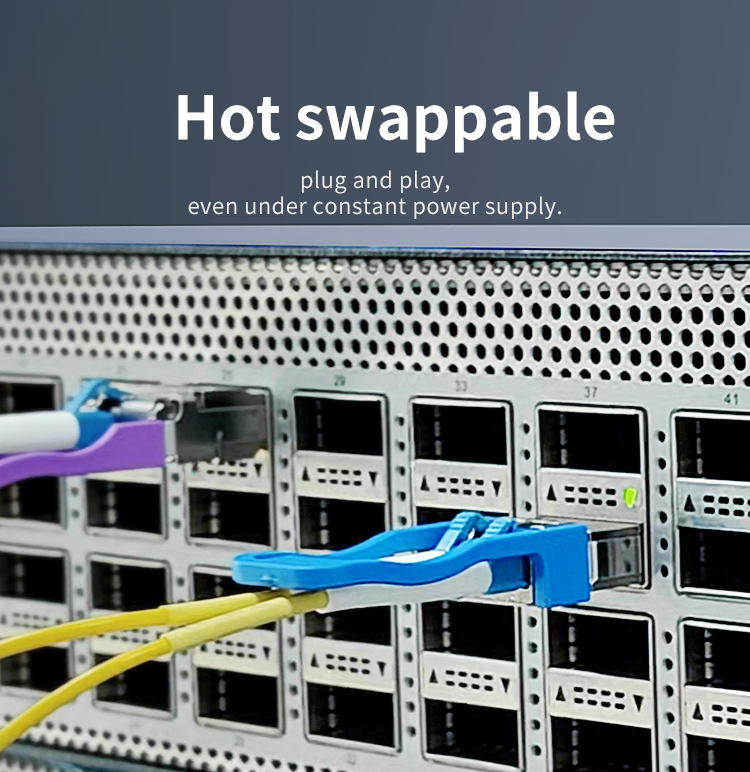
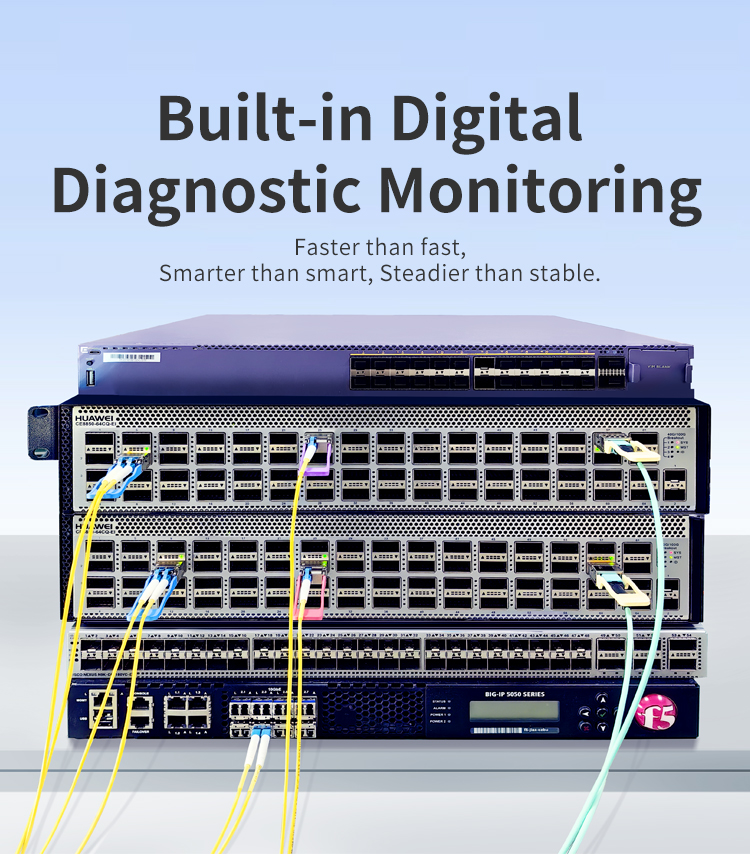

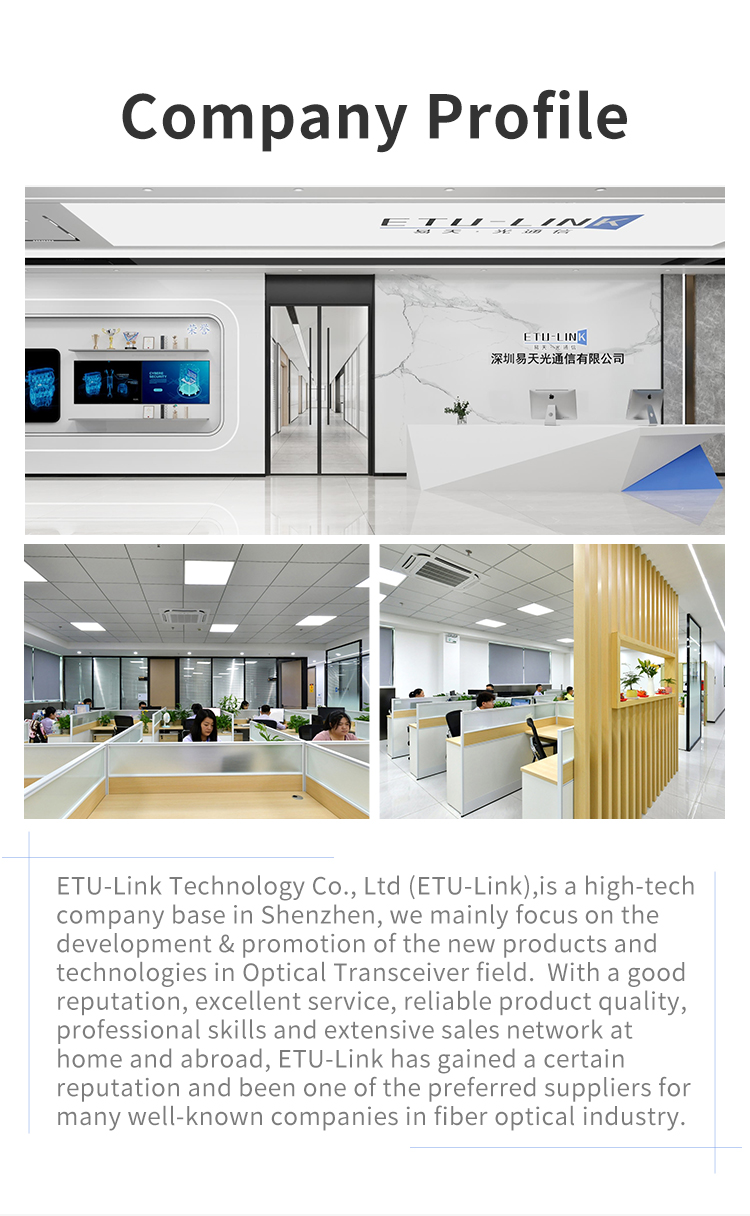
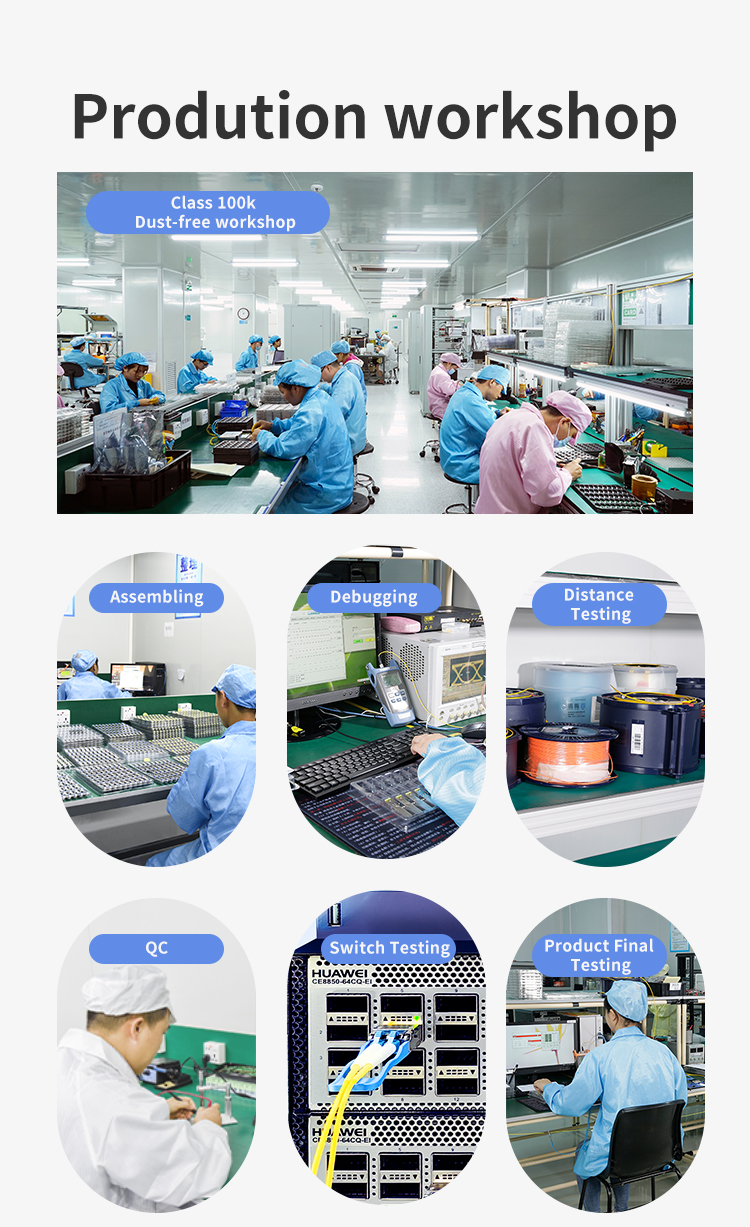
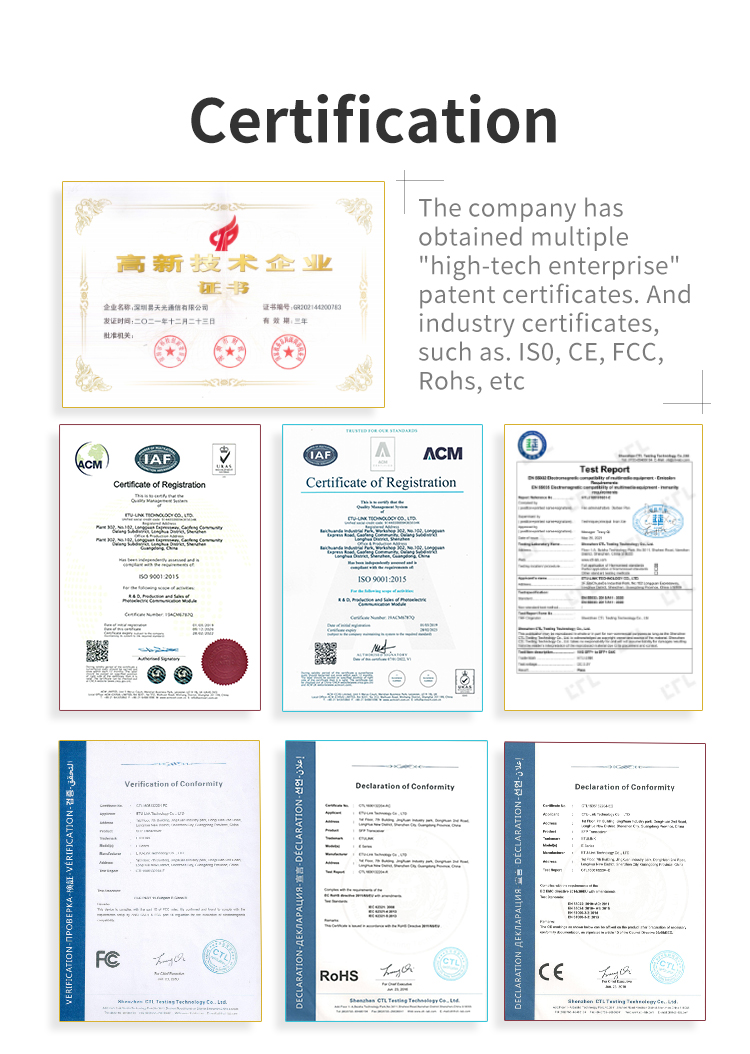
Q1: Can 10G SFP+ LR modules work with single-mode fibers?
A1: Yes, standard 10G-LR modules require OS2 single-mode fiber (1310nm wavelength) with 10km reach.
Q2: Can I use 10G BiDi SFP+ for duplex fiber conversion?
A2: Yes, BiDi modules (1270nm/1330nm) enable single-fiber bidirectional transmission on existing duplex fiber plants.
Q3: Why do some 10G SFP+ modules require external clock circuits?
A3: High-speed modules (e.g., 10G-LR) use CDR (Clock Data Recovery) chips to reduce jitter, requiring precise clock synchronization circuits on host PCB designs.
Q4: Can I plug a 10G SFP+ module into an SFP port?
A4: Physically compatible, but electrically incompatible – SFP ports lack 10G SerDes lanes, causing link failure unless switch supports rate adaptation.
Q5: What is difference between SFP and SFP+?
A5: The main difference between SFP and SFP+ is that the SFP+ is used in Gigabit Ethernet applications while SFP is for 100Bse or 1000Base applications. SFP doesn't support 10G transmission data rate, which means they can't be used in the same network.
Q6: What is SFP+ port used for?
A6: SFP + modules are commonly used for Gigabit Ethernet and 10 Gigabit Ethernet connections and can adapt to various application scenarios, including high-speed network connections and fiber optic links.
Q7: How to choose between SR, LR and ER optical modules?
A7: SR (Short Reach) for ≤300m multimode, LR (Long Reach) for 10km single-mode, ER (Extended Reach) for 40km+ single-mode applications.
Q8: What are the advantages of 10G SFP+ BIDI?
A8: Key Benefits:
Single-Fiber Solution - Uses WDM to transmit/receive on one fiber (e.g., 1270nm/1330nm pairing)
Cost Savings - 50% less fiber usage, 30-40% lower installation costs
Space Efficiency - Doubles port density without new cabling
Applications: areas with limited fiber resources, 5G fronthaul networks, metropolitan area network expansion, and high-density data center interconnection.
Q9: Do 10G modules support DDM/DOM monitoring?
A9: A: Yes, compliant modules follow SFF-8472 for real-time monitoring of temperature, TX power, and RX sensitivity.
Q10: What is the maximum transmission distance of ETU-Link optical modules?
A10: Our modules support from 100m (SR multimode) up to 120km (ZR single-mode), with specific models optimized for 300m, 10km, 40km, 80km and 120km applications.
Previous:
10G BiDi SFP+ 1270nm/1330nm 10KM LC Optical TransceiverNext:
10G BiDi SFP+ 1270nm/1330nm 40KM LC Optical TransceiverIf you are interested in our products and want to know more details,please leave a message here,we will reply you as soon as we can.
Categories
© Copyright: 2025 ETU-Link Technology CO ., LTD All Rights Reserved.

IPv6 network supported
Friendly Links:
易天官网